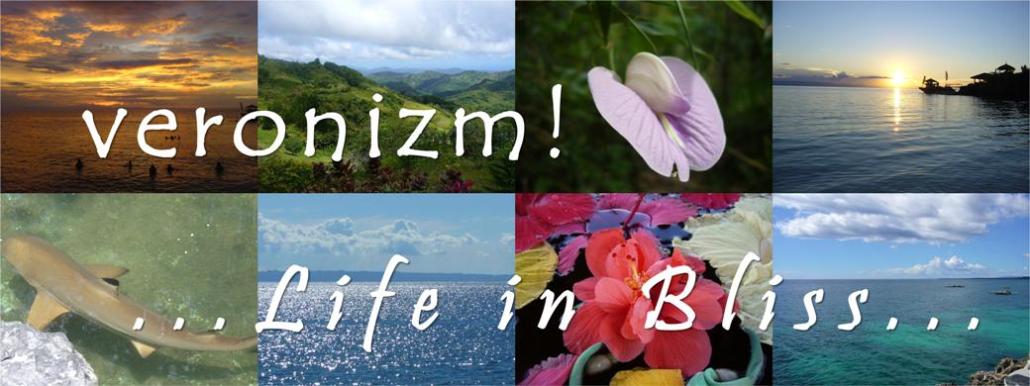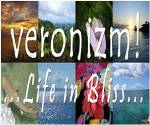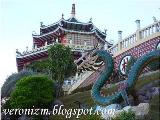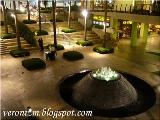Old School Philippines
I came across this email which talks about the trade system in the Philippines during the 15th century. I really find it interesting and educational. The writer is a veteran journalist Carmen Guerrero-Nakpil. Here is the article:
15th CENTURY PHILIPPINES : THE CHINESE TREASURE FLEET
MANILA, MAY 26, 2008 (STAR)
By Carmen Guerrero-Nakpil -
It was the people of our archipelago who discovered Magellan and the Europeans in 1521, not the other way around, as most Filipinos were taught by our grade-school textbooks. Our islands and their inhabitants were well-known to a larger, richer world that of Chinese emperors and scholars and Arab traders, as early as the 9th, even 6th centuries. And certainly by 1000 A.D., our shores were regular ports of call in the trade with China, then the most powerful nation on earth.
Chinese chronicles, European archaeologists and the diggings in our pre-colonial burial grounds prove that those ancient Filipinos used fine porcelain, weights and measures imported from China, and recorded written contracts. Chao-Ju-Kua reported that Chinese traders visited Ma-I (Luzon) regularly, leaving silks, porcelain and metal utensils on the beaches of designated islands, and returning weeks later to collect payment in the form of beeswax, gold dust, carabao horn, ginger, cinnamon or garlic. It was an import-export system run on a reliable honor system with unquestioned good faith. (Tell that to our Bureau of Customs.) "Filipinos had long been literate when Magellan came." writes Harvard historian Laurence Bergreen, one of the sources of this article.
In their Middle Ages, it was the Europeans, the recently Christianized descendants of the Goths, Visigoths, Gauls and Anglo-Saxons, who were rude barbarians leading brutish lives as serfs, knights or marauding barons. They often ate tasteless, half-rotten meat (salt was a rarity) and succumbed in their un-lettered thousands, to plagues and feudal wars.
When Magellan's Spanish Armada hove into view in March 1521, the natives of Homonhon in the Visayas must have taken pity on the small black ships with tattered sails and scruffy, starving, disoriented sailors, for they sent a small rowboat packed with rice, coconuts and bananas to their rescue. On the next island, the white, bearded strangers were feted in a bamboo palace with a banquet of roast fish, pork, turtle eggs and palm wine, by a native king whose queen wore a black-and-white gown, red lips and nails, while a quartet of young, topless damsels played music on various gongs and drums.
Those early Filipinos had been more accustomed to the tall, prosperous, Chinese ships with a trio of feathery sails stiffened with battens, for the China trade had been in place for at least 500 years. During the Ming Dynasty, Filipinos enjoyed the visits of the Treasure Fleet (1405-1500) of Admiral Cheng Ho (Zhen He) a huge, 7-ft tall, powerful eunuch, who had built 1,500 massive, 500-ft ships in a giant shipyard in Nanking with the help of 30,000 workers. The luxurious ships, each manned by 1,000 sailors ruled the South Pacific and the Indian Ocean. They had staterooms with gold fittings, bronze cannon, bulkheads and watertight compartments. Some ships carried only food, including potted orange trees (which saved the Chinese from the European scurvy); others only water, or horses, troops and weapons. They had a communication system of flags, lanterns, bells, gongs and carrier pigeons; nautical charts, astronomy maps, measuring instruments and clocks using incense sticks.
The Treasure Fleet reached Africa, India and Australia, stopping en-route in the islands of our archipelago. It was discontinued for a time, when another emperor took over, but resumed and lasted till 1500. But the Chinese were not interested in conquest or territorial aggrandizement. Their purposes were trade and diplomacy. That was what our ancestors expected when they first saw the Spanish Armada.
Filipinos had never seen white men before Magellan and never thought the strangers would be as rapacious and predatory as they would prove to be. They assumed the new foreigners to be poor and needy because they had only glass beads, a string of little bells and a red cap (Magellan's gifts) to reciprocate the native prodigality. The white men were, in fact, so dazzled by the earrings, chains, armlets and anklets, of pure gold, worn by both the native men and women that Magellan had to warn them against showing their covetousness.
At that time, our land consisted of thousands of islands with pristine, enchanting ecosystems. Our people lived along sand beaches, the banks of crystalline rivers and magical lakes where they fished; farmed the rice fields and orchards between the peaks of the Cordilleras , majestic waterfalls and volcanoes; they hunted, dug for gold, wove cloth from plants and grasses, sang and danced, swam and feasted.
They were loosely organized into small fiefdoms, ruled by occasionally-warring chieftains, attended by household serfs and slave workers and warriors. They believed in the spirits of earth, wind, fire, trees and water and in a supreme being, Bathala, who would take care of everything. Their women were priestesses and rulers, with a degree of sexual freedom that would have made the X and Y-Generations blush.
Except for the small indigenous tribe of frizzy-haired, negroid nomads, who lived in the forests and were almost extinct, our ancestors had come from the original, intrepid, sea-faring Malays who had crossed the China Sea from the Asian mainland, through Malaysia and Indonesia, and traveled northwards towards the superbly fertile islands of our archipelago. Positioned at the economic and political crossroads of the world, they welcomed all comers, and vigorously intermarried with Spaniards, Americans, Japanese, Eurasians but most of all, with Chinese. Thus did we become today's multiracial Filipinos. And we still have the Chinese Treasure Fleet with us, in the swarm, extravagant shopping malls, built and run by taipans, Messrs, Sy, Go, Tan and others, the spiritual descendants of the fabled Cheng Ho.
* * *
Carmen Guerrero-Nakpil, a veteran journalist and author, recently published the first two volumes of her autobiography, Myself, Elsewhere and Legends and Adventures. She is also chair of the Manila Historical and Heritage Comission.
Chief News Editor: Sol Jose Vanzi
© Copyright, 2008 by PHILIPPINE HEADLINE NEWS ONLINE



.jpg)











nice article!! =)
Post a Comment
Hi! Pls. make sure that your comments are related to the topic of this post. Any SPAM or comments containing inappropriate/offensive content may not be approved for posting.
COMMENTS CONTAINING SPAM LINKS, WEBSITE LINKS, AND LINKS NOT RELATED TO THE POST TOPIC WILL NOT BE APPROVED